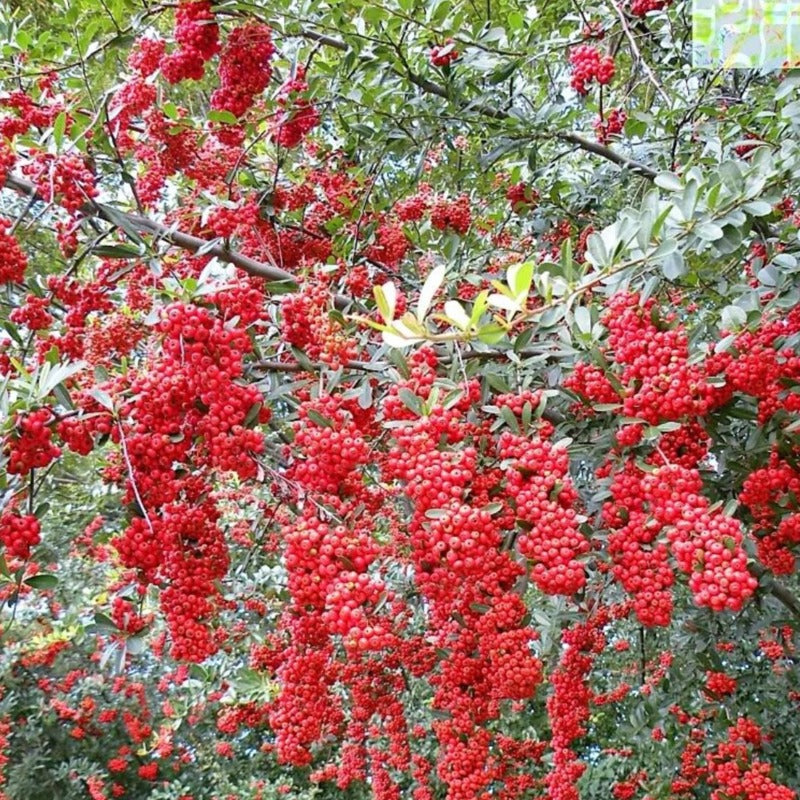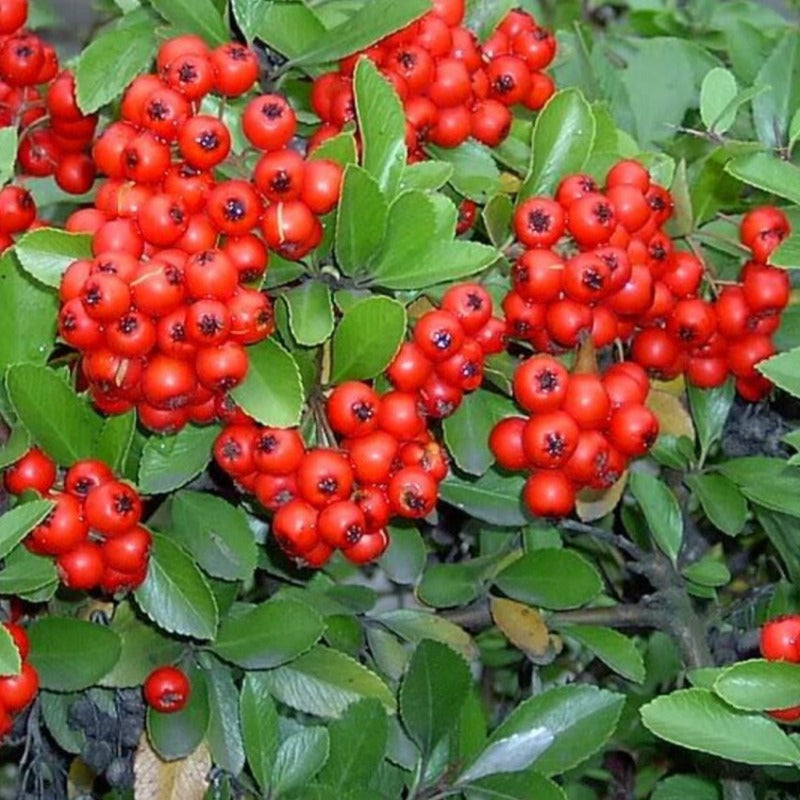- Historical context: The Scarlet Firethorn (Pyracantha coccinea) is a species of shrub in the family Rosaceae. It has been cultivated for centuries for its ornamental value and its ability to attract wildlife.
- Geographical origination: Native to Southern Europe and Western Asia.
- Relevant cultural significance: The Scarlet Firethorn has been used in various cultures for ornamental purposes, particularly in hedges and as a barrier plant due to its thorny nature.
- Time period of discovery: The exact time of discovery is not well-documented, but it has been known and cultivated since ancient times.
- Original habitat: It thrives in rocky and hilly areas, often found in scrublands and open woodlands.
- Notable historical uses: Historically, it has been used for creating impenetrable hedges and for its bright red berries, which are attractive to birds.
- Ideal temperature range: The Scarlet Firethorn prefers temperate climates with temperatures ranging from 15°C to 25°C (59°F to 77°F).
- Soil type: It grows best in well-drained soil with a pH range of 6.0 to 7.5. It can tolerate a variety of soil types, including clay, loam, and sandy soils.
- Sunlight requirements: Full sun to partial shade. It requires at least 6 hours of direct sunlight per day for optimal growth.
- Watering needs: Moderate watering is required. The soil should be kept moist but not waterlogged. It is relatively drought-tolerant once established.
- Planting season: The best time to plant Scarlet Firethorn seeds is in the spring or fall.
- Germination time: Seeds typically take 2 to 3 months to germinate. Stratification (cold treatment) for 2 to 3 months can improve germination rates.
- Growth cycle duration: It is a perennial plant that can live for many years, with a growth cycle that includes flowering in late spring to early summer and berry production in the fall.
- Common pests and diseases: Common pests include aphids, spider mites, and fire blight. Diseases such as scab and powdery mildew can also affect the plant.
- Companion planting advice: Companion plants include other shrubs and trees that thrive in similar conditions, such as junipers and hollies. Avoid planting near plants susceptible to fire blight.
- Common challenges and solutions: Fire blight is a significant challenge. Pruning infected branches and applying appropriate fungicides can help manage this disease. Ensuring good air circulation and avoiding overhead watering can also reduce disease risk.
- Nutritional values: The berries are not typically consumed by humans due to their bitter taste, but they are rich in vitamins and antioxidants.
- Health benefits: While not commonly used in traditional medicine, the berries are known to have some antioxidant properties.
- Culinary uses: The berries are generally not used in culinary applications due to their bitterness and potential toxicity if consumed in large quantities.
- Medicinal uses: There are no widely recognized medicinal uses for the Scarlet Firethorn in modern herbal medicine.
- Other unique advantages: Ornamental Value: The Scarlet Firethorn is highly valued for its bright red berries and attractive foliage, making it a popular choice for landscaping.
Wildlife Attraction: The berries attract birds, providing a food source during the winter months.
Barrier Plant: Its thorny branches make it an excellent choice for creating natural barriers and hedges.








